Sorted by date Results 101 - 125 of 393
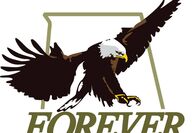
April 8, 2025 - The Board of Trustees of the Alabama Forever Wild Land Trust will hold its second quarterly meeting of 2025 on Thursday, May 1, at the Fultondale Event Center, 2980 Hawkins Lane, in Fultondale, Alabama. The meeting will take place at 10 a.m. At this meeting, updates on Forever Wild program activities and tract assessments will be presented. This meeting will also provide an opportunity for any individual who would like to make comments concerning the program to address the...

April 10, 2025 - A jubilee is a naturally occurring phenomenon that happens in only two locations in the world, Mobile Bay and Tokyo Bay, during which large numbers of fish and crustaceans are forced into shallow water due to low dissolved oxygen in the water. Jubilees are not "fish kills" and the fish, shrimp, and other marine life generally return to normal behavior when the conditions change. However, the events bring sea life right to the shore where they can be seen and harvested. These...

April 11, 2025 - So much is happening in the Alabama Department of Conservation and Natural Resources' (ADCNR) State Parks Division that it's difficult to keep up with all the renovations, upgrades and expansions at the 21 State Parks. The newest expansion is at Meaher State Park on the Mobile Causeway (Battleship Parkway) at the head of Mobile Bay. The Meaher RV Campground work includes a new bathhouse and new RV sites. Reservations (https://reserve.alapark.com/) are now available for the new...
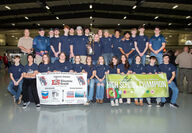
Over the past year, thousands of student archers competed in regional tournaments throughout the state for a chance to draw their bows at the 2025 National Archery in the Schools Program (NASP) Alabama State Championship in Montgomery on April 3-4. During the event, nearly 2,000 archers from 105 schools competed for top honors and the opportunity to advance to the NASP Eastern National Championship on May 8-10, 2025, in Louisville, Kentucky. The Alabama Department of Conservation and Natural...

April 11, 2025 - The Exceptional Anglers event Gone Fishin', Not Just Wishin' at Oak Mountain State Park will take place May 7-9, 2025. The event teaches basic fishing skills to students with disabilities from Alabaster and Pelham city schools and the Shelby and Jefferson county school systems. The media is invited to attend on Thursday, May 8, from 9:30-11:30 a.m. "Community fishing events like this one serve many children and seniors throughout the state," said Chris Blankenship, Commissioner...

Chewacla State Park - Who said Easter egg hunts are just for kids? Join the Golden Egg Hunt at Chewacla State Park on April 17 and 18, 2025. Find a golden egg and bring it to the front gatehouse to redeem for a prize! One egg per person per day. Learn more: https://tinyurl.com/4azpj4h6 Ready for more egg hunting fun? Join us again on April 19, 2025, and bring your family and friends! We'll start the Easter egg hunt at 2:00 p.m. around the Chewacla State Park Nature Center. Registration is...
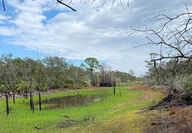
A generous donation of 13 lots is enabling the Alabama Department of Conservation and Natural Resources (ADCNR) to protect additional ecologically sensitive property on the Fort Morgan Peninsula. The Alabama Coastal Heritage Trust donated the Fort Morgan lots to Alabama State Parks to join previous acquisitions to preserve the sand dunes and maritime forests on Alabama's beautiful Gulf Coast. ADCNR Commissioner Chris Blankenship said the donation from the Trust continues the effort to conserve...
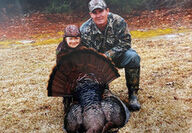
March 21, 2025 - MONTGOMERY, AL. - Even the most lifelong-obsessed turkey hunters will have to be impressed by what Mari Grace Brooks has accomplished in chasing the elusive birds the past 15 years. The 19-year-old from Ramer, Alabama, has two Grand Slams, taking the four subspecies – Eastern, Osceola, Rio and Merriam's – in the United States, which is quite a feat for any turkey hunter. Even more impressive is she has two Double Grand Slams, where she harvested two of each of those species in...

I remember the last time I came back from a river-fishing trip with a friend. It was a beautiful morning to be on the water. The early morning, during the summer, is usually the best because the heat really picks up about mid-morning. That day was no different. By 10:30, our hopes were fried, along with our back and neck. But even before that, the action was minimal at best. We caught a few small ones, but never really got into the smallmouth population we had hoped for. The last few times we...
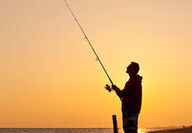
March 20, 2025 - MONTGOMERY, AL - The Coastal Section of the Alabama Department of Conservation and Natural Resources' (ADCNR) State Lands Division is accepting proposals for projects to be performed in the Alabama Coastal Area (defined as Mobile County and Baldwin County) for Fiscal Year 2026 (October 1, 2025 – September 30, 2026). This competitive funding opportunity is administered by State Land's Alabama Coastal Area Management Program (ACAMP) utilizing federal funds currently anticipated t...
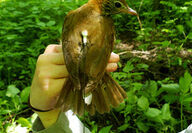
Modern technology is aiding wildlife biologists and researchers in numerous ways, including a tool that is in its infancy in Alabama. The Motus Wildlife Tracking System program erects tracking stations throughout the Americas, Canada, Europe and Australia to detect wildlife (mainly bird) movements, according to Mercedes Maddox, Nongame Wildlife Biologist with the Alabama Department of Conservation and Natural Resources' (ADCNR) Wildlife and Freshwater Fisheries (WFF) Division. Motus is a global...

I love the warmer days of winter. It gives me a chance to walk my hunting areas. Because the leaves are off the trees and because there is no concern about spooking deer, I can gather all kinds of information from the last season. It is a great time to assess the good and bad of the previous year and plan some changes for the next. The woods will give a hunter plenty of information about the previous year and about the possibilities of the next season. One just has to do go out, walk around, be...

March 12, 2025 - The Alabama Department of Conservation and Natural Resources (ADCNR) is excited to announce the winners of the 2025 Outdoor Alabama Photo Contest. As usual, the judges had a very difficult time selecting the winning images from the nearly 2,000 photos that were entered. "Alabama is a photographer's paradise thanks to its wide variety of natural landscapes, native plants and wildlife and outdoor recreation opportunities," said Chris Blankenship, ADCNR Commissioner. "From the nort...

When the Alabama Tourism Department selects a feature or activity in the state to highlight for its "The Year of" designation, that campaign normally lasts for one year. However, the most recent promotion, The Year of Alabama Trails, will require two years to complete because of the enormous outdoors opportunities in one of the most geographically and biologically diverse states in the nation. The kick-off for the campaign was held last week atop Birmingham's Red Mountain at the Vulcan Park and...

It's been 48 years since Kip Padgelek and his dad launched their custom deer processing business. After a career revolving around all things meat, including an education at the Culinary Institute of America, Padgelek, now almost 70, has no plans to retire, The Daily Yonder reports. That's good news for the many customers of his business, which is located in a suburb west of Pittsburgh (his shop's specialty is a Philly cheesesteak brat). But it's even better news for those who rely on the 40,000...

Most people are aware of the stunning natural beauty, the hiking and biking trails and upgraded accommodations at the Alabama Department of Conservation and Natural Resources' (ADCNR) Alabama State Parks, but some Alabamians and visitors may not be aware of one of the recreational opportunities at three of the system's parks. Golf Courses at Oak Mountain State Park, Joe Wheeler State Park and Lake Guntersville State Park offer a day on the links at a reasonable price, and those courses have...

The map showed 700 acres in famous Pike County, Illinois. And it was ours to hunt – 4 of us, that is. We had planned on this hunt for months and knew we would be arriving at the prime time for the rut. The outfitter showed us where some of the best places to put a stand were but also wanted us to scout the day before we were scheduled to hunt. The 700 acres were broken down into three sections; the east side, the west side, and the sanctuary which lay between the two and to the north. This w...
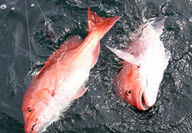
At the first Alabama Conservation Advisory Board meeting of 2025, held last weekend in Montgomery, Board members heard a state of the Alabama Department of Conservation and Natural Resources (ADCNR) report from Conservation Commissioner Chris Blankenship as well as proposed tweaks to the white-tailed deer daily bag limit and changes to the red snapper season. The proposed changes to red snapper season should be great news for those who love to fish for Alabama's signature saltwater species....

On a damp and grimly grey winter day in Paris, Bill François is a beacon of positivity. After a brief stroll along the River Seine, he comes to a halt at the Henri IV Dock with Notre Dame Cathedral just about visible through the mist. Here, François flicks his wrist back and then gently launches a fishing line out into the choppy waters. "The Seine is a wild place in the heart of Paris," enthuses François, who has come prepared in an all-weather outfit that includes a cap, sunglasses, and wa...
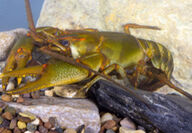
February 7, 2025 - MONTGOMERY, AL - Every 10 years, the Alabama Department of Conservation and Natural Resources' (ADCNR) Wildlife and Freshwater Fisheries Division (WFF) is required to update its State Wildlife Action Plan (SWAP) to be eligible for federal funding that is crucial to many endangered and threatened species in the state. ADCNR staff members are currently in the process of updating the SWAP, which will be submitted by September 2025. The Congressional State Wildlife Grant (SWG)...

Alabama Department of Conservation and Natural Resources Press release January 30, 2025 Contact: Keith Henderson, (334) 242-3471 Newly Renovated J.E. Turner Mount Vernon Public Boat Ramp Provides Improved Access to Outdoor Recreation in South Alabama On Thursday, January 30, 2025, representatives from the Alabama Department of Conservation and Natural Resources (ADCNR), Alabama Legislature, Town of Mount Vernon and Mobile County took part in a ribbon cutting ceremony to celebrate the reopening...

February 12, 2025 - The Marine Resources Division (MRD) of the Alabama Department of Conservation and Natural Resources (ADCNR) will temporarily close the Billy Goat Hole Boat Ramp on Dauphin Island for additional renovations beginning at 6 p.m. on Sunday, February 23, 2025. During the closure, the current boat ramps and docks will be removed and replacements will be installed approximately 30 feet further from Bienville Boulevard. The additional distance from the roadway will allow more room...

February 16,2025 - Research into numerous saltwater fish species has produced some interesting revelations, including how important the Mobile-Tensaw Delta is to the recruitment of those species, which include southern flounder, spotted seatrout (speckled trout), red drum (redfish) and tripletail. Dr. Sean Powers, Director of the Stokes School of Marine and Environmental Sciences at the University of South Alabama (USA), said the research team and recruited anglers have been tagging the inshore...

February 15, 2025 - MONTGOMERY, AL - The Wildlife and Freshwater Fisheries (WFF) Division of the Alabama Department of Conservation and Natural Resources (ADCNR) has reopened Riverview Public Boat Ramp on the Warrior River near Tuscaloosa after the completion of a major facility upgrade. During the closure, the facility's damaged launching slab was replaced. WFF and the City of Tuscaloosa have partnered to repave the existing parking lot and install a new access pier in the coming months. The...
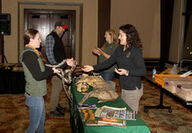
February 21, 2025 - GUNTERSEVILLE, AL - When the Association of Fish and Wildlife Agencies (AFWA) staff scheduled AFWA's annual Wildlife Diversity Program Managers Meeting at Lake Guntersville State Park, they didn't realize the potential distraction just outside the meeting room windows. Sitting on the banks of one of the most productive fisheries in the nation, Lake Guntersville State Park's lodge atop Taylor Mountain offers stunning views of the 69,000-acre reservoir on the Tennessee River....